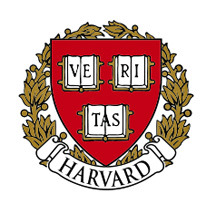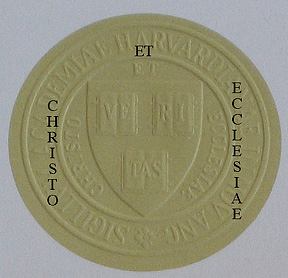This Thursday, May 27th, Harvard University holds its commencement. It’s not called “graduation,” but “commencement,” because the ceremony is the beginning of life beyond the university. I had to opportunity to participate in two Harvard commencements, in 1979 as I finished college, and in 1992 to receive my Ph.D. Yes, that means I did pay some form of tuition during 18 consecutive
years, from 1975 to 1992. And, yes, it suggests I was a rather slow
student, the Crimson tortoise, not the hare.
Today, and during the next couple of days, I want to share some reflections on my alma mater. In particular, I will focus on a few curious ironies about Harvard and my experience there. (I blogged on these six years ago, but it’s time to refresh my thoughts.)
 During my years at Harvard, the university seal was everywhere: on
During my years at Harvard, the university seal was everywhere: on
library chairs and notebooks, on sweatshirts and university signs,
wherever I turned, there was VE-RI-TAS, following my every move like
the eye of God (or, perhaps, Lord Sauron). Harvard was all about veritas, Latin for “truth.” (It’s popularly pronounced “VER-ee-tas,” except by classics majors, who us the more proper “WER-ee-tas.”)
But
it wasn’t until I was well into my college experience that I learned
the truth about the Harvard seal and the motto emblazoned upon it. Yes,
the motto did contain the word veritas. But on the official official university seal veritas didn’t stand alone. It was joined to three other Latin words: christo et ecclesiae. The whole motto translated into English reads: “Truth . . . for Christ and the church.”
This
official motto, adopted by the university in 1692, was consistent with
Harvard’s original vision for its educational purpose. Among the “Rules and Precepts” of 1646 was the following:
Let
every Student be plainly instructed, and earnestly pressed to consider
well, the maine end of his life and studies is, to know God and Jesus
Christ which is eternal life (John 17:3) and therefore to lay Christ in
the bottome, as the only foundation of all sound knowledge and
Learning. And seeing the Lord only giveth wisedome, Let every one
seriously set himself by prayer in secret to seeke it of him (Prov.
2:3).

Needless
to say, during the last three centuries, Harvard lost touch with
its original purpose, though the student body continues to include a
healthy number of faithful Christians. The predominant view among many
Harvardians these days, however, would be that truth is relative, and
that there is no certain truth upon which to base one’s life. You’d find a more robust view of truth among those who teach and study in the natural sciences. But even among most of those who actually believe there is Truth to be discovered and studied, the idea
that the pursuit of truth is for the sake of Christ and the church
would considered an curious antique of a pre-modern age. (Photo: The official university seal from my Ph.D.
diploma. Around the central shield that reads VERITAS, you can barely
see the Latin words CHRISTO ET ECCLESIAE.
Notice that veritas christo et ecclesiae does not consist only of theological truth. This phrase assumes that all truth is relevant to Christ and his people, including the truth of physics, chemistry, sociology, psychology, philosophy, and, well, you name it. This view of truth denies the oft-made distinction between the sacred and secular. It sees all of creation, and therefore all of truth, as a result of God and a reflection of God’s own truthfulness. Veritas christo et ecclesiae encourages people to engage in all academic disciplines for the sake of the kingdom of God.
Though I spent eight years in residence at
Harvard, I still believe that there is such a thing as VERITAS, as
Truth with a capital ‘T.’ Moreover, I even believe that human beings
should pursue such Truth for the sake of Christ and his church. This
pretty much explains why I do what I do as a pastor, a retreat leader, a teacher,
a student of Scripture, and a blogger. In fact, I believe along with the governors of
Harvard in 1646, that Christ is “the only foundation of all sound
knowledge and Learning.” Yes, I may be a bit of an antique. But
sometimes antiques are worth a whole lot more than newfangled
contraptions. When it comes to truth, I think the founding leaders of
my alma mater got it right. Truth, all truth, when rightly understood, is indeed “for
Christ and the church.”

